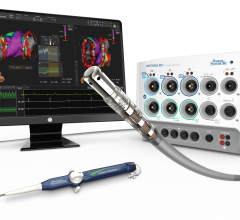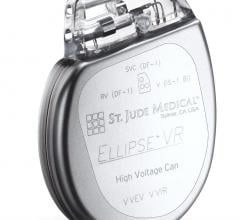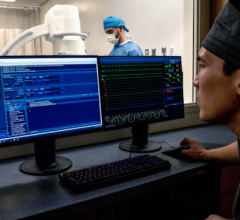This is an example of an automated calcium scoring software to speed review of coronary artery calcium (CAC) scoring ...
Cerner has announced the development of the Cerner Learning Health Network to help clinicians more easily and efficiently gain health insights and guide care. Cerner aims to automate data collection from multiple sources, including the electronic health record (EHR), to rapidly give medical researchers access to important information that has the potential to transform patient care. Through combined technology and expertise, Cerner and the Duke Clinical Research Institute (DCRI) have joined together to pilot the Cerner Learning Health Network and innovate clinical research registries in the process.
Hormone replacement therapy is a common treatment for menopause-related symptoms, and new research from the University of Pittsburgh Graduate School of Public Health reinforces the importance of tailoring hormone therapy to each patient, based on her individual risk factors for cardiovascular disease.
Providing exceptional cardiovascular care for patients to achieve the best possible outcomes is the number one goal for ...
This is an example of in-stent restenosis shown using spectral CT imaging. This example was demonstrated by Philips ...
Heart failure is the fourth most common cause for all admission to U.S. hospitals, and it is the most common reason for ordering an inpatient transthoracic echocardiogram (TTE). Research presented at the 30th Annual American Society of Echocardiography (ASE) Scientific Sessions shows patients who received an echocardiogram with contrast were less likely to require repeat tests and had shorter hospitalizations overall. This study shows the value of contrast (ultrasound enhancing agent/UEA) for improving clinical care and potentially decreasing healthcare costs.
Blood pressure monitoring might one day become as easy as taking a video selfie, according to new research in Circulation: Cardiovascular Imaging, an American Heart Association journal.
Cardiac positron emission tomography (PET) is growing in popularity among cardiologists because it provides the ability ...

There were several interesting new trends in cardiovascular computed tomography (CT) imaging at the 2019 Society of ...
Cardiovascular Systems Inc. (CSI) has acquired the Wirion Embolic Protection System and related assets from Gardia Medical Ltd., a wholly owned Israeli subsidiary of Allium Medical Solutions Ltd.
When used with a common heart scan, machine learning, a type of artificial intelligence (AI), does better than conventional risk models at predicting heart attacks and other cardiac events, according to a study published in the journal Radiology.
When performing radiofrequency (RF) ablation to treat cardiac arrhythmia, medical professionals must balance the safety ...
A West Virginia-based rural medical outreach event showcased the use of point-of-care technology in an ambulatory setting and demonstrated that it can enhance clinical decision making. Physicians used new digital health technologies to diagnose acute and chronic cardiovascular diseases in a resource-limited area, and found that it improved their ability to diagnose common cardiac conditions such as atrial fibrillation and heart failure. Research findings on how this technology-based care impacts provider referral and downstream testing were presented during the 30th Annual American Society of Echocardiography (ASE) Scientific Sessions, June 21-25 in Portland, Ore.

New technologies have been developed that may replace the traditional pressure wires and adenosine to assess the ...
Abbott is recalling the Ellipse Implantable Cardioverter Defibrillators (ICDs) because electrical failures have been identified and determined to be due to a faulty manufacturing process, causing some aluminum wires to be partially exposed. ICDs which contain aluminum wires that are not fully insulated are prone to electrical shorting of the capacitor. The potential patient impact could be the inability to deliver high voltage therapy. There is currently no available method or procedure to determine which of these devices have this issue prior to failure.
Change Healthcare Cardiology Hemodynamics is an integrated hemodynamic monitoring system for monitoring vital signs and ...
The American Society of Radiologic Technologists (ASRT) announced its support for House Resolution (HR) 3772, a measure that loosens certain radiopharmaceutical bundling practices and simplifies Medicare billing for nuclear medicine procedures.
B. Braun Interventional Systems Inc. (BIS) announced the U.S. Food and Drug Administration (FDA) has granted Breakthrough Device Designation for the SeQuent Please ReX drug-coated PTCA balloon catheter for the treatment of coronary in-stent restenosis (ISR).

Guidewire engineering has become more advanced over the past decade as interventional cardiologists have advanced their trade to tackle much more complex lesions, including chronic total occlusions (CTO). Moving beyond simple, straightforward percutaneous coronary intervention (PCI) lesions to harder-to-reach lesions located in tortuous anatomy, revascularizing completely blocked vessel segments that often require guidewires approaching the CTO both integrate and retrograde and at times using a subintimal approach. This has been the biggest growth area for new guidewires technology.


 August 08, 2019
August 08, 2019














